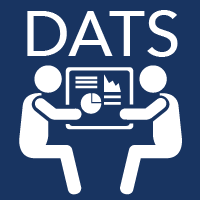GPUs and Parallelization - Biye Jiang, Aaron Culich
Attending
- Anyone is welcome. We hope you’ll join us!
Meeting Info
- When: 4:00pm - 5:30pm
- Where: BIDS, Room 190 of Doe Library.
- Who: Anyone interested in software development best practices is welcome to come to our meetings.
- How: A predetermined main topic (45 minutes) will be followed by impromptu lightning talks (5 minutes each)
Biye Jiang
Biye Jiang is a PhD student at UC Berkeley in the CS department working with John Canny.
Aaron Culich
Aaron is a research computing architect at Berkeley.
Discussion: GPUs and Parallelization
Today’s topic is about GPUs and parallelism.
Survey of Needs and Resources – Aaron Culich
Aaron referenced a presentation on this topic. It can be found here.
Aaron started this presentation with a survey of what the attendees are actually using.
- GPUs? 3 folks.
- Other Parallelization? Lots of folks.
Python Parallelism
It was mentioned that, for some folks, python is the language of choice. The Python Multiprocessing module was mentioned. This was the topic of a THW session last year. The THW resources on this topic can be found here. That session was not on GPUs, however, the python threading module can be used in conjuction with PyCUDA, a python module for GPUs.
Research IT – Krishna Muriki
Research IT is available as a resource for individuals who would like to test their code on GPU resources. Krishna Muriki expresses that there is an institutional shared linux cluster (Savio). Within that cluster, there are 6 compute nodes with 4 kepler GPUs each. Those nodes are in testing and BRC is interested and open to new users.
Java runtime engine – Oliver
Oliver at ESPM has a javascript modeling project for agent based population models. They are working to make their software scalable from the desktop to the level of higher performance computing. The NOVA stack and XSEDE resources are core to their efforts.
Scala Demo – Biye Jiang
Biye demonstrated the speed of GPUs by conducting a matrix multiplication using GPUs versus conducting the same multiplication using CPUs.
GPU Discussion
Biye shared some of the diagrams from this presentation.
He noted
- GPUs give excellent speed,
- but GPU memory latency is also an issue.
- So the throughput is high, but so is the memory latency.
- If you want your GPU code to run quickly, optimize for throughput.
- Always remember, GPU memory access is slower than computation.
- Moving data between the GPU and the main memory should be avoided.
GPU BIDMat demo
Biye presented an ipython notebook to demostrat how BIDMat works.
The ipython notebook demos are here.
Lightning Talks
Finally, there will be a time for a couple of Lightning Talks, which are
5-10 minute blasts of information about a particular topic or question of
interest to the group. This topic can be anything useful, new, or interesting
to scientists who compute. It may be some new skill you have recently picked up
in your research, a productivity tool you have recently learned to love, a
quick demo of a useful library, or anything you feel we would enjoy learning.
Note that the lightning talk time is a good way to bring a question to the
group. If you have a bug you need help with, here’s the place to ask many ears
about it at once.
Name : Topic
Notes and links
Name : Topic
Notes and links




